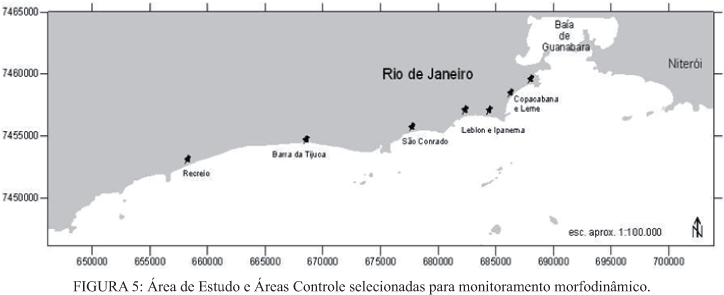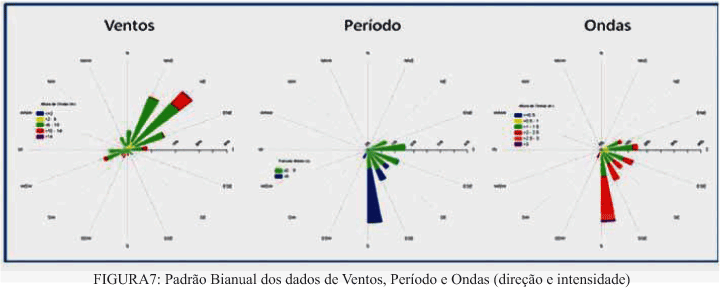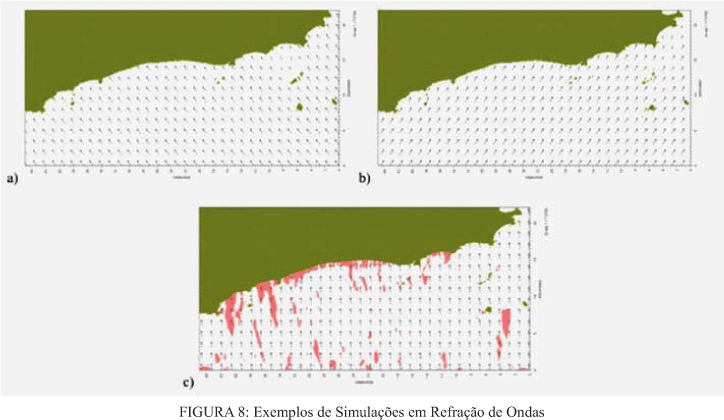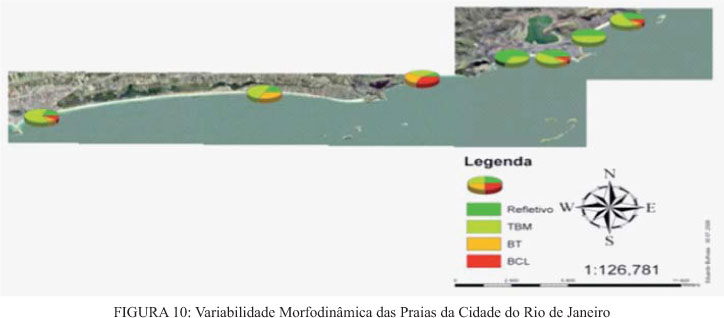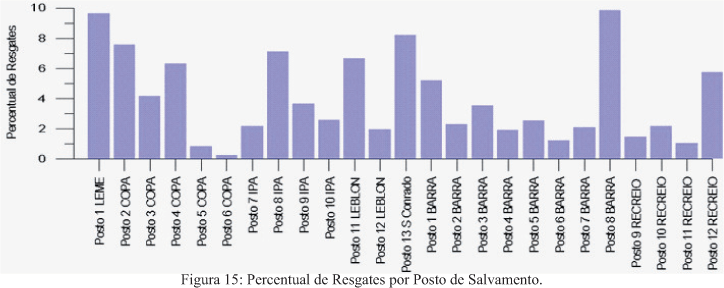In oceanic beaches of Rio de Janeiro drowning accidents are identified as a major public security problem in recreational environments. The number of rescues of bathers in these beaches reaches 5000 per year. The aim of this study is to identify critical morphodynamic beach conditions on the surfzone that represent hazards and can expose bathers to the risk of drowning and other associated injuries. These hazards are breaking waves, surfzone bottom topography and the formation of longshore and rip currents, named here as nearshore circulation cell. These are a result of physical interaction between hydrodynamic marine conditions promoted by waves with the adjustment of the sandy bottom topography on the surfzone, and while people use these beaches as a recreational place, this can promote unsafely conditions for most swimmers. The evaluated hypothesis is that previous identification of hazardous beach conditions, which can be made by the identification of modal wave climate, and the morphodynamic response of each beach for the input of wave energy, can generate differentiated conditions along the beaches and even along the same beach. Morphodynamic analysis can identify several hazards and. rescue data can be used to identify areas where the most accidents take place and areas of high concentration of bathers. The result reached is a forecasting guide of hazardous beach conditions, which correlates breaking wave height, tidal oscillations and morphodynamic beach states.
Drowning Victims; Beach Morphodynamics; Surfzone Currents; Rio de Janeiro





